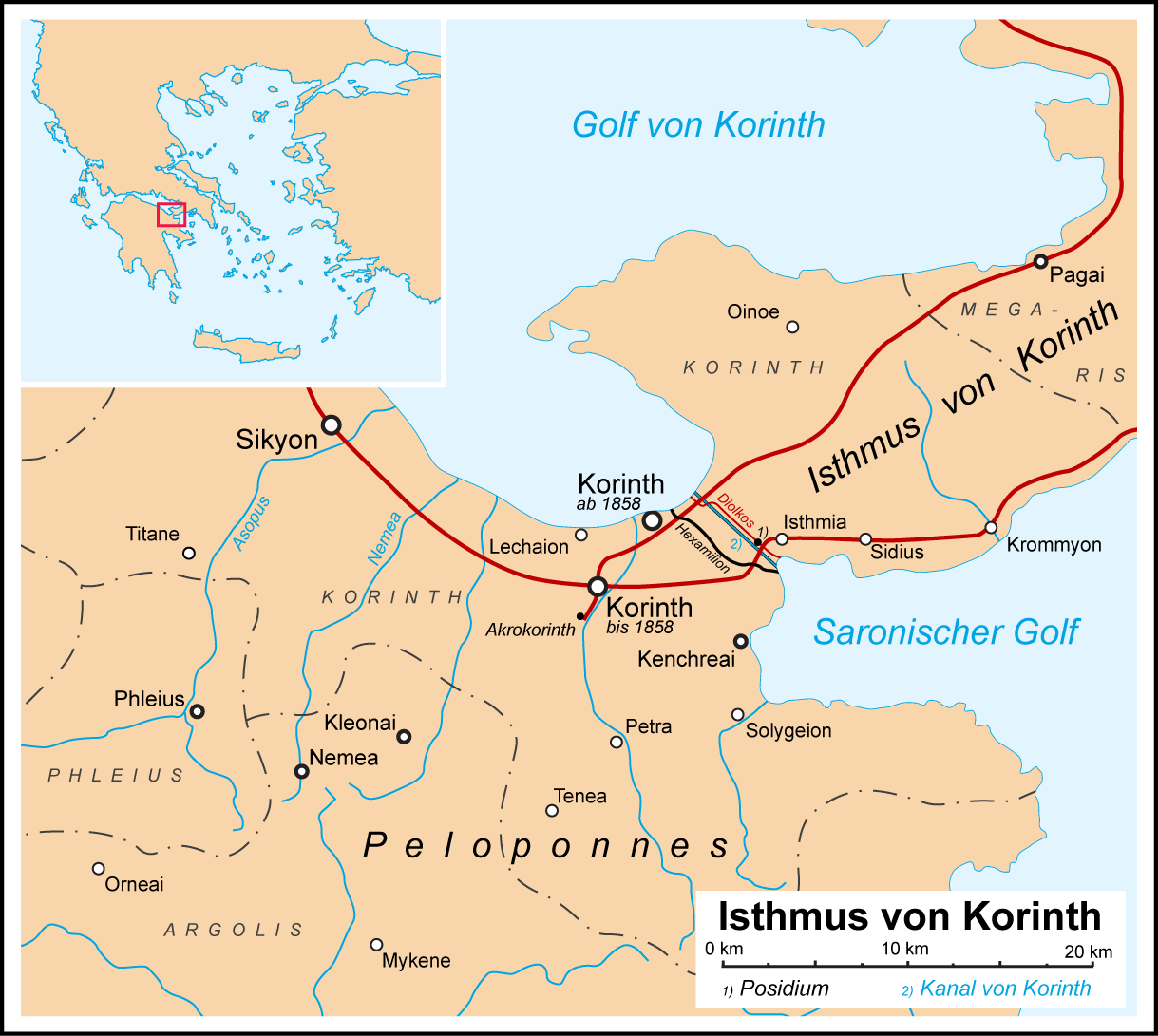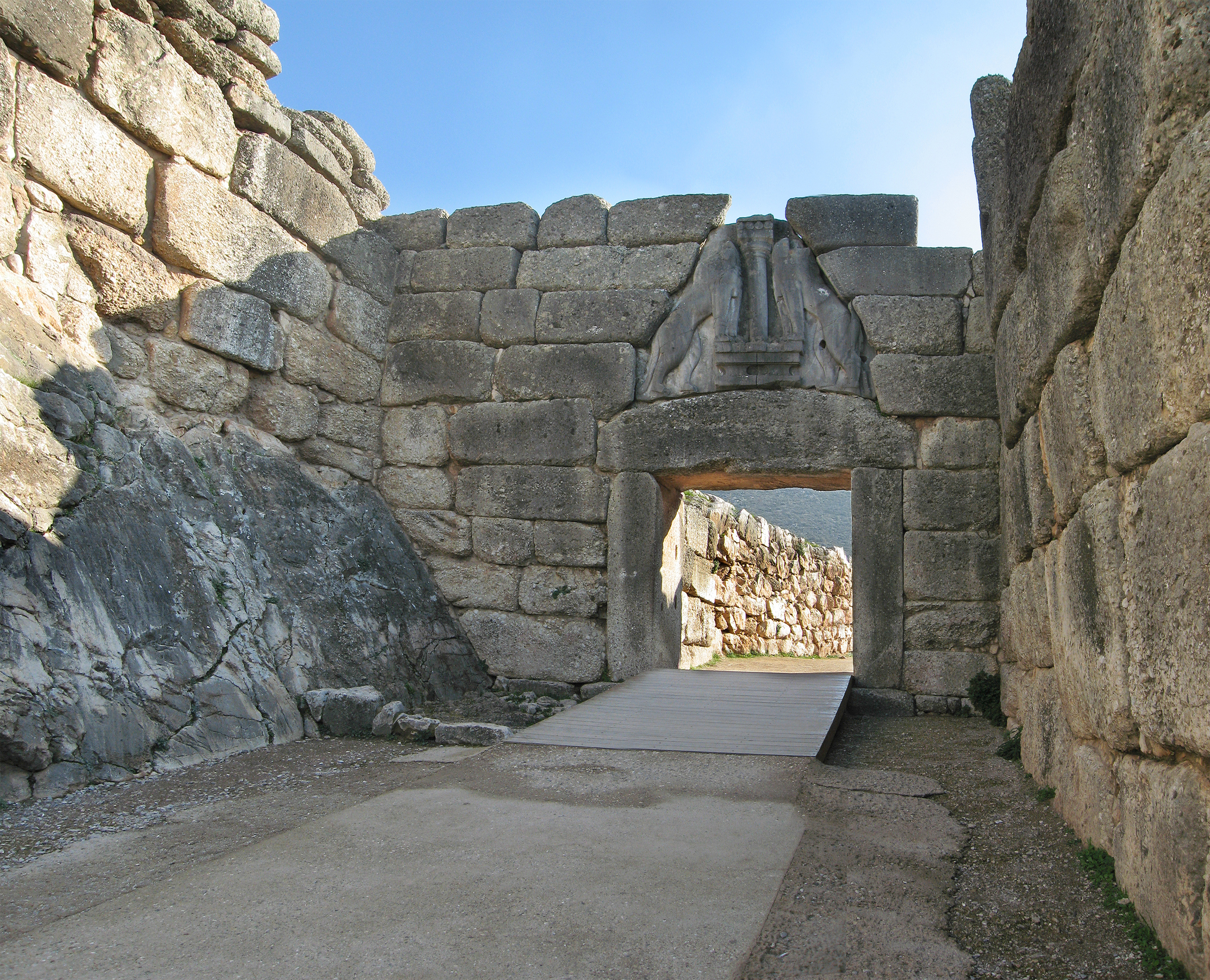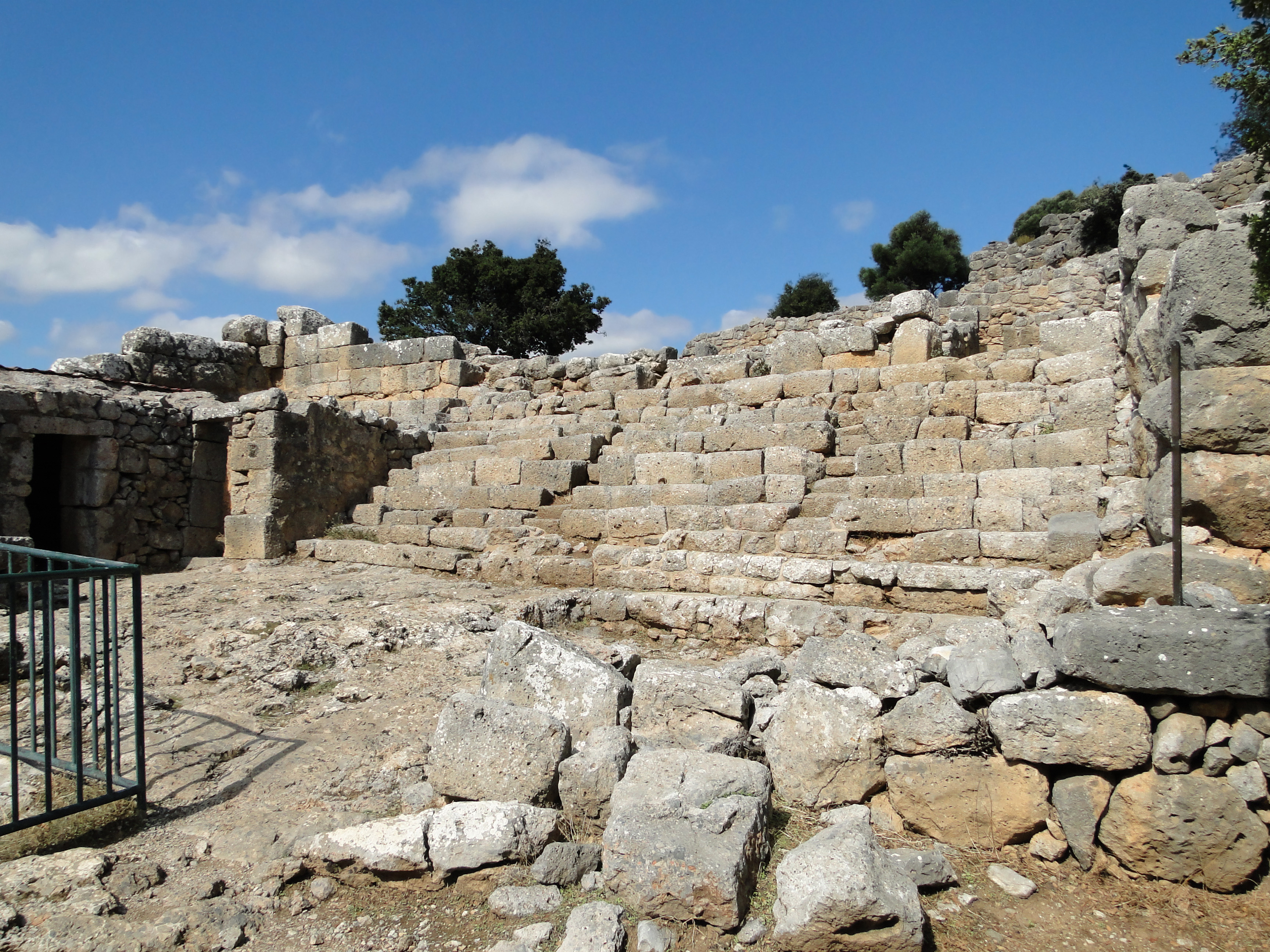|
Sicyonian Characters In Greek Mythology
Sicyon (; ; ''gen''.: Σικυῶνος) or Sikyōn was an ancient Greece, ancient Greek polis, city state situated in the northern Peloponnesus between Corinth, Greece, Corinth and Achaea (ancient region), Achaea on the territory of the present-day regional unit of Corinthia. The ruins lie just west of the modern village of Sikyona (previously Vasiliko). An ancient monarchy at the times of the Trojan War, the city was ruled by a number of tyrants during the Archaic and Classical period and became a democracy in the 3rd century BC. Sicyon was celebrated for its contributions to ancient Greek art, producing many famous painters and sculptors. In Hellenistic times it was also the home of Aratus of Sicyon, the leader of the Achaean League. Ancient history Sicyon was built on a low triangular plateau about 3 kilometres (two miles) from the Corinthian Gulf. Between the city and its port lay a fertile plain with olive groves and orchards. In Mycenaean Greece, Mycenean times, acco ... [...More Info...] [...Related Items...] OR: [Wikipedia] [Google] [Baidu] |
Mycenaean Greece
Mycenaean Greece (or the Mycenaean civilization) was the last phase of the Bronze Age in ancient Greece, spanning the period from approximately 1750 to 1050 BC.. It represents the first advanced and distinctively Greek civilization in mainland Greece with its palatial states, urban organization, works of art, and writing system.. The Mycenaeans were mainland Greek peoples who were likely stimulated by their contact with insular Minoan Crete and other Mediterranean cultures to develop a more sophisticated sociopolitical culture of their own. The most prominent site was Mycenae, after which the culture of this era is named. Other centers of power that emerged included Pylos, Tiryns, and Midea in the Peloponnese, Orchomenos, Thebes, and Athens in Central Greece, and Iolcos in Thessaly. Mycenaean settlements also appeared in Epirus, Macedonia, on islands in the Aegean Sea, on the south-west coast of Asia Minor, and on Cyprus, while Mycenaean-influenced settlements appear ... [...More Info...] [...Related Items...] OR: [Wikipedia] [Google] [Baidu] |
Argos, Peloponnese
Argos (; ; ) is a city and former municipality in Argolis, Peloponnese (region), Peloponnese, Greece and is one of the List of oldest continuously inhabited cities, oldest continuously inhabited cities in the world, and the oldest in Europe. It is the largest city in Argolis and a major center in the same prefecture, having nearly twice the population of the prefectural capital, Nafplio. Since the 2011 local government reform it has been part of the municipality of Argos-Mykines, of which it is a municipal unit. The municipal unit has an area of 138.138 km2. It is from Nafplion, which was its historic harbour. A settlement of great antiquity, Argos has been continuously inhabited as at least a substantial village for the past 7,000 years. A resident of the city of Argos is known as an Argive ( , ; ). However, this term is also used to refer to those ancient Greeks generally who assaulted the city of Troy during the Trojan War; the term is more widely applied by the Hom ... [...More Info...] [...Related Items...] OR: [Wikipedia] [Google] [Baidu] |
Dorian Invasion
The Dorian invasion (or Dorian migration) is an ancient Greek myth and discredited archaeological hypothesis describing the movement of the Dorian people into the Peloponnese region of Greece. According to the myth, the Dorians migrated from central Greece shortly after the Trojan War and populated most of the southern Peloponnese, particularly the regions of Laconia, Messenia and the Argolid. The myth became combined with that of the Return of the Heracleidae, such that the descendants of the hero Heracles were imagined to have led the Dorians and founded the ruling lines of several Dorian cities, including Sparta. The myth probably emerged during the Early Iron Age as part of a process of ethnogenesis between cities claiming Dorian ancestry. In the fifth century BCE, it gained greater prominence through its use to promote unity among Sparta's Peloponnesian allies, and to differentiate Sparta from its rival Athens, believed to be of Ionian heritage. In 1824, the Germ ... [...More Info...] [...Related Items...] OR: [Wikipedia] [Google] [Baidu] |
Menaechmus Of Sicyon
Menaechmus (, c. 380 – c. 320 BC) was an ancient Greek mathematician, geometer and philosopher born in Alopeconnesus or Prokonnesos in the Thracian Chersonese, who was known for his friendship with the renowned philosopher Plato and for his apparent discovery of conic sections and his solution to the then-long-standing problem of doubling the cube using the parabola and hyperbola. Life and work Menaechmus is remembered by mathematicians for his discovery of the conic sections and his solution to the problem of doubling the cube. Menaechmus likely discovered the conic sections, that is, the ellipse, the parabola, and the hyperbola, as a by-product of his search for the solution to the Delian problem. Menaechmus knew that in a parabola y2 = ''L''x, where ''L'' is a constant called the ''latus rectum'', although he was not aware of the fact that any equation in two unknowns determines a curve. He apparently derived these properties of conic sections and others as well. Using th ... [...More Info...] [...Related Items...] OR: [Wikipedia] [Google] [Baidu] |
Fragmente Der Griechischen Historiker
''Die Fragmente der griechischen Historiker'', commonly abbreviated ''FGrHist'' or ''FGrH'' (''Fragments of the Greek Historians''), is a collection by Felix Jacoby of the works of those ancient Greek historians whose works have been lost, but of which we have citations, extracts or summaries. It is mainly founded on Karl Wilhelm Ludwig Müller's previous ''Fragmenta Historicorum Graecorum'' (1841–1870). The work was started in 1923 and continued by him till his death in 1959. The project was divided into six parts, of which only the first three were published. The first included the mythographers and the most ancient historians (authors 1-63); the second, the historians proper (authors 64–261); the third, the autobiographies, local histories and works on foreign countries (authors 262-856). Parts I-III come to fifteen volumes, but Jacoby never got to write part IV (biography and antiquarian literature) and V (historical geography). A pool of editors is currently trying to co ... [...More Info...] [...Related Items...] OR: [Wikipedia] [Google] [Baidu] |
Felix Jacoby
Felix Jacoby (; 19 March 1876 – 10 November 1959) was a German classicist and philologist. He is best known among classicists for his highly important work '' Fragmente der griechischen Historiker'', a collection of text fragments of ancient Greek historians. Biography Jacoby was born in Magdeburg to Jewish parents. There he attended the grammar school at the monastery of ''Unser Lieben Frauen'' (Our Dear Lady) in Magdeburg and was baptised a Protestant in St John's Church at the age of 11. From 1906 to 1934, he was professor of Classics at Kiel. Though he was later expelled from the University of Kiel during the ''Gleichschaltung'' of Nazi Germany, Jacoby is said by some to have been one of a very small number of German Jews who initially supported Adolf Hitler. According to some witnesses, he even went so far as to make the startling comparison in 1933: As a Jew I find myself in a difficult position. But as a historian I have long learned not to view historical events fro ... [...More Info...] [...Related Items...] OR: [Wikipedia] [Google] [Baidu] |
Castor Of Rhodes
Castor of Rhodes (), also known as Castor of Massalia or Castor of Galatia according to the ''Suda'', or as Castor the Annalist, was a Greek grammarian and rhetorician. He was surnamed Philoromaeus (Φιλορώμαιος, meaning Lover of Rome) and is usually believed to have lived about the time of Cicero and Julius Caesar. Background Castor is frequently referred to as an authority in historical matters. A partiality to the Romans is suggested by the surname ''Philoromaeus'', and may have been evident in a work mentioned by Plutarch as comparing the institutions of Rome with those of Pythagoras. The ''Suda'' describes the grammarian and rhetorician Castor as a son-in-law of the Galatian king Deiotarus (whom it calls a Roman senator), who afterwards put both Castor and his wife to death because Castor had brought charges against him before Caesar, evidently alluding to the affair in which Cicero defended Deiotarus. This appears to be the same Castor, mentioned by Strabo, who ... [...More Info...] [...Related Items...] OR: [Wikipedia] [Google] [Baidu] |
Dorians
The Dorians (; , , singular , ) were one of the four major ethnic groups into which the Greeks, Hellenes (or Greeks) of Classical Greece divided themselves (along with the Aeolians, Achaeans (tribe), Achaeans, and Ionians). They are almost always referred to as just "the Dorians", as they are called in the earliest literary mention of them in the ''Odyssey'', where they already can be found inhabiting the island of Crete. They were diverse in way of life and social organization, varying from the populous trade center of the city of Ancient Corinth, Corinth, known for its ornate style in art and architecture, to the isolationist, military state of Sparta; and yet, all Hellenes knew which localities were Dorian and which were not. Dorian states at war could more likely, but not always, count on the assistance of other Dorian states. Dorians were distinguished by the Doric Greek dialect and by characteristic social and historical traditions. In the 5th century BC, Dorians and Ion ... [...More Info...] [...Related Items...] OR: [Wikipedia] [Google] [Baidu] |
Mycenae
Mycenae ( ; ; or , ''Mykē̂nai'' or ''Mykḗnē'') is an archaeological site near Mykines, Greece, Mykines in Argolis, north-eastern Peloponnese, Greece. It is located about south-west of Athens; north of Argos, Peloponnese, Argos; and south of Corinth. The site is inland from the Saronic Gulf and built upon a hill rising above sea level. In the second millennium BC, Mycenae was one of the major centres of Greek civilisation, a military stronghold which dominated much of southern Greece, Crete, the Cyclades and parts of southwest Anatolia. The period of History of Greece, Greek history from about 1600 BC to about 1100 BC is called Mycenaean Greece, Mycenaean in reference to Mycenae. At its peak in 1350 BC, the citadel and lower town had a population of 30,000 and an area of . The first correct identification of Mycenae in modern literature was in 1700, during a survey conducted by the Venetian engineer Francesco Vandeyk on behalf of Francesco Grimani, the Provveditore Ge ... [...More Info...] [...Related Items...] OR: [Wikipedia] [Google] [Baidu] |
Agamemnon
In Greek mythology, Agamemnon (; ''Agamémnōn'') was a king of Mycenae who commanded the Achaeans (Homer), Achaeans during the Trojan War. He was the son (or grandson) of King Atreus and Queen Aerope, the brother of Menelaus, the husband of Clytemnestra, and the father of Iphigenia, Iphianassa (daughter of Agamemnon), Iphianassa, Electra, Laodice (Greek myth), Laodike, Orestes and Chrysothemis. Legends make him the king of Mycenae or Argos, Peloponnese, Argos, thought to be different names for the same area. Agamemnon was killed upon his Returns from Troy, return from Troy by Clytemnestra, or in an older version of the story, by Clytemnestra's lover Aegisthus. Etymology Different etymologies have been proposed for the name ''Agamemnon'' (). According to one view, the name means 'very steadfast', 'unbowed' or 'resolute'. This is based on the interpretation of the name as a compound word comprising the elements 'very much' and 'to stay, wait; stand fast'. According to anothe ... [...More Info...] [...Related Items...] OR: [Wikipedia] [Google] [Baidu] |





